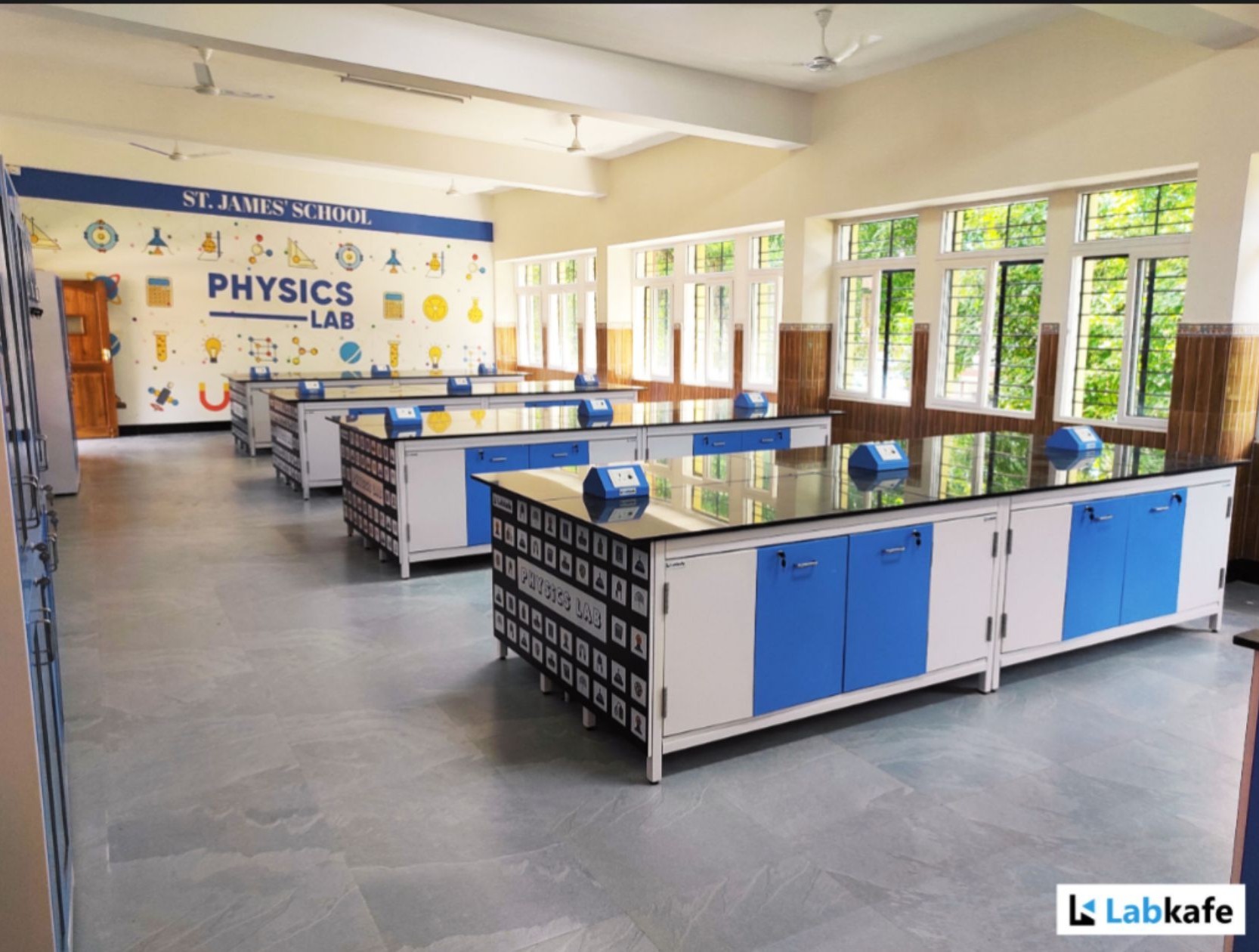-

Wet vs Dry Lab Furniture in Schools: Chemistry vs Physics Lab
Schools must carefully consider the type of laboratory furniture when designing labs. The requirements for wet and dry lab furniture are significantly different because the nature of experiments, equipment, and safety considerations vary widely across subjects. Let’s explore how wet vs dry lab furniture differs, especially in the school setting. Understanding Wet vs Dry Labs…
-

What is a Biological Safety Cabinet?
Biological safety cabinets are used in laboratories to prevent the spread of infectious agents or aerosols that may be released while handling infected or virulent samples. They filter a portion of the air using HEPA filters and recirculate clean air back into the lab. These cabinets also direct a HEPA-filtered airflow onto the sample, keeping…
-

How to Use a Biological Safety Cabinet: 5 Step Guide
A biological safety cabinet (BSC) is critical for protecting personnel, products, and the environment from airborne contaminants. Proper operation is paramount to prevent sample contamination, maintain culture integrity, and ensure the long-term effectiveness of the BSC itself. How to Use a Biological Safety Cabinet? Biological safety cabinets (BSCs) need to be operated in a certain…
-

Local Exhaust Ventilation vs General Ventilation: 10-Point Comparison
Why Optimum Air Quality in Workspaces is Not Optional Local exhaust ventilation vs general ventilation: Poor indoor air quality is a serious problem in many workplaces. From welding fumes to dust, smoke, vapors, and other airborne contaminants, workers are constantly exposed to hazards that may not be visible but can cause long-term health damage. Traditional…
-

Fume Hood vs Biosafety Cabinet: 5 Key Differences You Must Know
Essential Differences Between Fume Hood vs Biosafety Cabinet When working in laboratories, choosing between a fume hood and a biosafety cabinet depends on what hazards you aim to control. Although they may look similar, their design, purpose, and protective features differ significantly. Let’s explore the key differences between a fume hood vs biosafety cabinet based…
-

Top 10 Renewable Energy Models for Science Projects in 2025
10 Renewable Energy Working Models for School Projects & Teaching Demonstrations Renewable energy is the talk of the town ever since we learnt that global warming destroys the planet. But how many of us actually know what renewable energy is? We learn about solar, hydro, and wind power in class textbooks. But never visit a…
-

Nuclear Reactor Model for Teaching School Demonstrations
What is the Principle of a Nuclear Reactor Model? A nuclear reactor model demonstrates how a nuclear reactor controls the process of nuclear fission to generate heat. This heat converts water into steam, which then spins a turbine connected to a generator. As the turbine rotates, it produces electricity. This rotation of the turbine is…
-

Hydropower Model: DIY Working Mini Hydroelectric Dam
Hydropower Models: Demonstrate Hydroelectricity Without a Field Trip What is Hydroelectric Power? Hydroelectric power, hydropower or hydroelectricity are synonymous, and represent the untapped energy contained within flowing water. This is in case of naturally flowing water found in streams, rivers and waterfalls. The hydropower model allows us to visualize this, as we will see shortly. How…
-

Windmill Model: Best Demonstration Kit for School Projects
Working Windmill Model for School Demonstration Projects If you need a working windmill demonstration model for a school project, this ready-to-use version is the perfect solution. Many students often struggle to make a proper windmill model on their own. Cutting cardboard and building DIY setups can take a lot of time and may not work…
-

Solar Demonstration Models: 5 Best Kits for Classes 6 to 10
The Sun produces solar energy. In such large amounts, that we could solve the world’s energy demand with it. Man harvests, stores and transforms solar energy for so many uses. Our solar demonstration models will teach you how. What is Solar Energy? Solar energy is the energy that the sun radiates. It travels towards the…
-

Chemical Storage Cabinets: 5 Key Designs & Uses
Chemicals on their own can be hazardous. However, when incompatible chemicals interact, the danger increases significantly. Hence, proper storage is essential to reduce risk. This where chemical storage cabinets come into play. Flammable liquids, corrosives, and toxic gases must be stored according to established safety standards. Follow Chemical Storage Protocols US Standards European Standard These…
-

Top Biosafety Cabinet Uses in Modern Laboratories
Biosafety cabinet uses in Microbiology, Medical Research, Pharmaceutical Laboratories, Diagnostic Laboratories, Biotechnology, Vaccine Development, Tissue Culture, Radiopharmaceuticals and Environmental Science are diverse. Let’s explore the various use cases and understand if you need a biosafety cabinet to perform your lab work safely. Types of Biosafety Cabinets Biosafety Cabinet (BSC) Class I BSC Class II BSC…
-

Quick 4 Step Guide to Clean Lab Tables
Cleaning lab tables requires attention to the type of surface, nature of the residue, and proper safety practices. Here are the 6 best ways to clean lab tables while maintaining laboratory hygiene and safety. Lab Table Cleaning Protocol Dust Removal Start by dusting to remove all loose dust particles using a non-flammable duster or table…
-

Complete Physics Lab Design Guide: Furniture & Setup Roadmap
You might be planning to set up a physics lab for your school, college, research institution, or industry.Before you set out to buy equipment and apparatus, you must have a rough idea of what your physics lab should look like.This is called physics lab design. Read along to learn how to design your physics lab…
